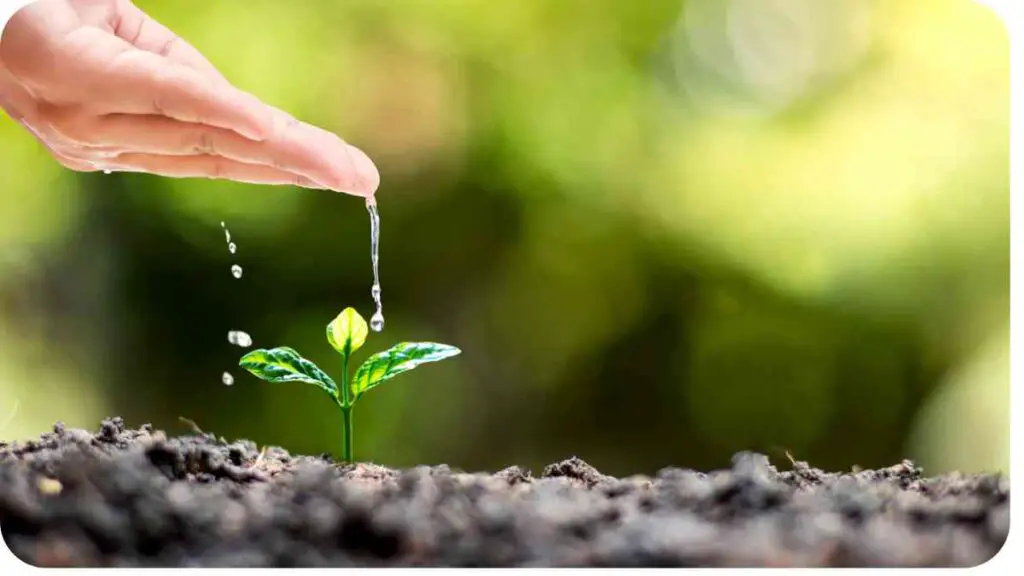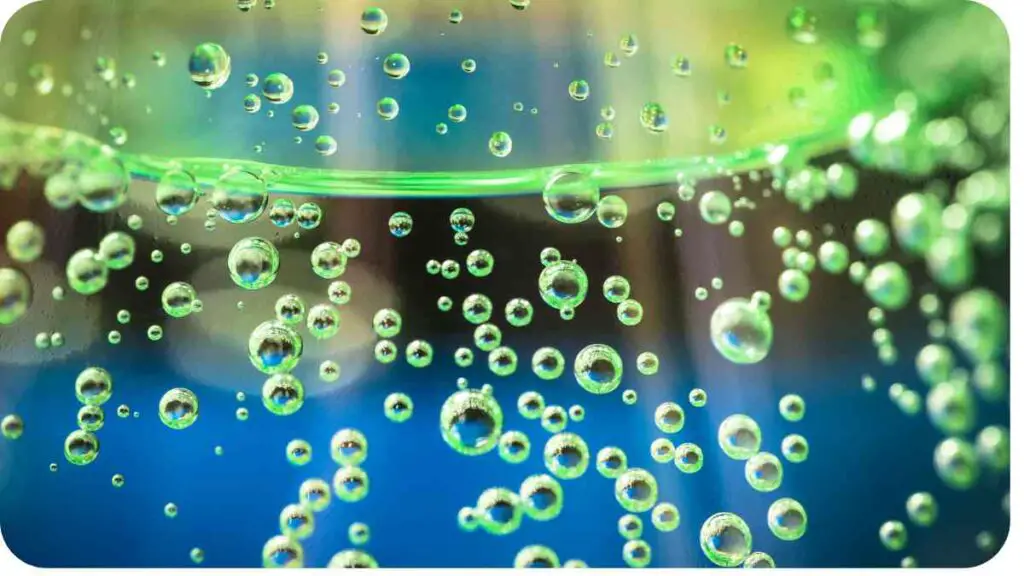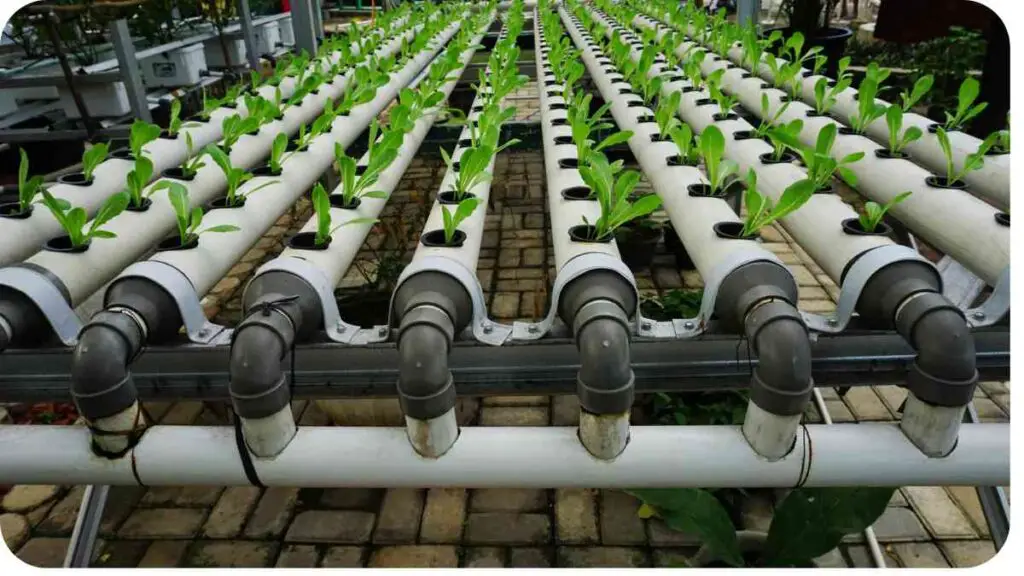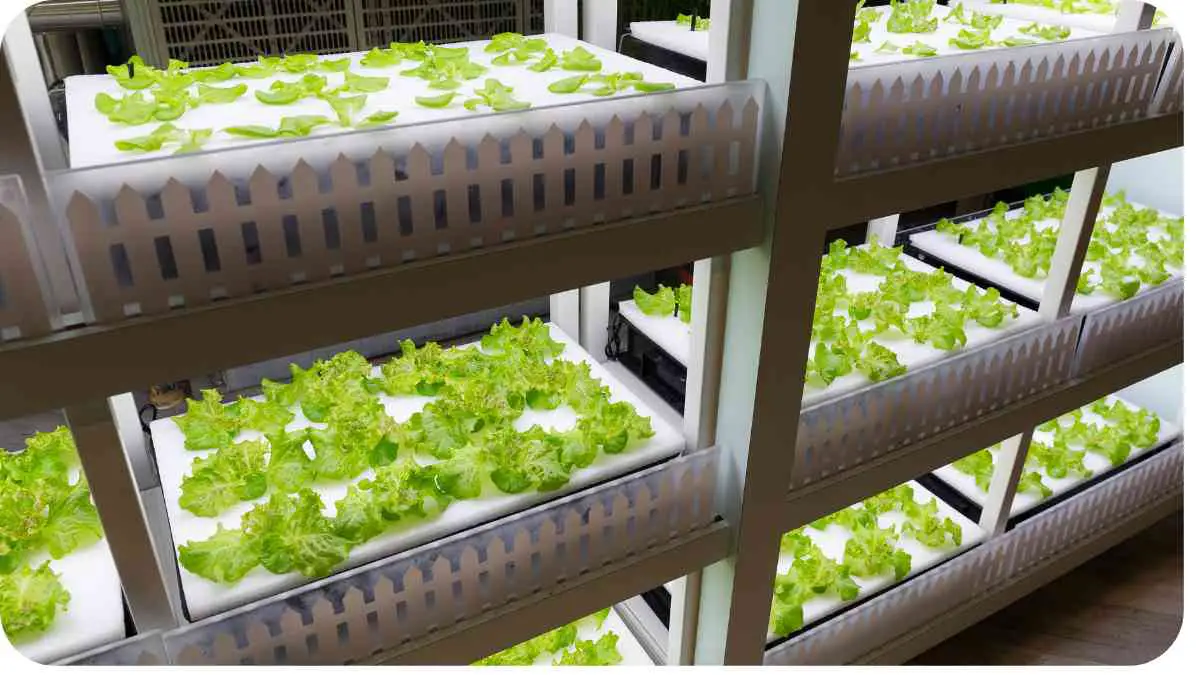Gardening enthusiasts often encounter the dilemma of watering their plants just right – too much water can be just as harmful as too little.
However, the impact of water varies depending on the cultivation method. In this article, we delve into the intriguing question: Why is too much water harmful to plants in a garden but not in a hydroponic system?
| Takeaways |
|---|
| 1. Understanding the differences in water management between garden and hydroponic systems is essential for successful plant cultivation. |
| 2. Overwatering can lead to root rot and other issues in traditional gardening, while hydroponic systems offer better control over water levels. |
| 3. Soil drainage, oxygen availability, and nutrient delivery significantly impact how plants respond to water in different cultivation methods. |
| 4. Hydroponic gardening provides several advantages, including water efficiency, faster growth, and reduced pest and disease risk. |
| 5. Exploring hydroponic gardening opens up opportunities for sustainable and space-saving cultivation, regardless of climate or space limitations. |
2. Understanding Plant Water Needs
Plants have varying water requirements influenced by factors such as species, growth stage, and environmental conditions. Let’s compare the water needs of garden plants with those in hydroponic systems.
When considering hydroponic vegetables, safety is paramount. Understanding the cultivation process and potential risks ensures confidence in their consumption. Learn more about hydroponic vegetables’ safety to make informed dietary choices.
Table 1: Comparison of Water Requirements for Garden Plants vs. Hydroponic Plants
| Plant Type | Water Requirement |
|---|---|
| Garden Plants | Variable; affected by soil type, weather conditions, and plant species |
| Hydroponic Plants | Consistent; controlled by nutrient solution composition and delivery |
In traditional gardening, plants rely on soil moisture, which can fluctuate greatly. On the other hand, hydroponic plants receive a precisely controlled amount of water and nutrients, ensuring optimal growth conditions.
3. Factors Affecting Plant Water Uptake

Several factors influence how plants uptake water, impacting their health and growth differently in gardens and hydroponic systems.
Table 2: Factors Affecting Water Uptake in Garden Plants vs. Hydroponic Plants
| Factor | Effect on Water Uptake |
|---|---|
| Soil Type | Determines water retention and drainage capability |
| Root Health | Healthy roots absorb water efficiently |
| Temperature | Influences water evaporation and plant transpiration |
| Nutrient Availability | Essential for osmotic balance and cell function |
Garden plants rely on soil for water and nutrients, while hydroponic plants receive nutrients directly from the solution, bypassing soil-related issues like poor drainage or nutrient deficiencies.
4. Soil Drainage in Traditional Gardening
Soil drainage plays a crucial role in preventing waterlogging, which can suffocate plant roots in traditional gardens.
Table 3: Soil Drainage Comparison: Traditional Gardening vs. Hydroponic Systems
| Aspect | Traditional Gardening | Hydroponic Systems |
|---|---|---|
| Drainage | Dependent on soil composition | Controlled by system design |
| Risk of Waterlogging | High | Low |
| Root Oxygenation | Limited | Enhanced by oxygenation systems |
In garden beds, soil compaction or clay soils can hinder drainage, leading to waterlogged conditions that harm plant roots. Hydroponic systems, with their inert growing medium or soilless setup, eliminate this risk.
Curious about the sweetness of hydroponic strawberries? Delve into the unique growing conditions that influence their flavor profile. Explore the factors behind hydroponic strawberries’ sweetness for a deeper understanding of their taste.
5. Risk of Root Rot in Overwatered Soil
Overwatering is a common issue in traditional gardening that can lead to root rot, whereas hydroponic systems offer better control over water levels, minimizing this risk.
Table 4: Symptoms of Root Rot in Garden Plants vs. Hydroponic Plants
| Symptom | Garden Plants | Hydroponic Plants |
|---|---|---|
| Wilting | Yes, often due to root suffocation | Less frequent due to controlled water levels |
| Yellowing Leaves | Common, indicating stress | Less common, as oxygenation prevents suffocation |
| Root Discoloration | Dark, mushy roots | Healthy, white roots |
Root rot occurs when soil remains waterlogged for extended periods, depriving roots of oxygen. Hydroponic systems mitigate this risk by delivering oxygen directly to roots through aerated nutrient solutions.
6. Oxygen Availability in Root Zone

Oxygen is essential for root respiration and nutrient uptake. Hydroponic systems excel in maintaining optimal oxygen levels compared to traditional soil-based gardening.
Maintaining an optimal temperature for your hydroponic water pump is crucial for its efficiency and longevity. Discover the recommended temperature range and how it impacts pump performance. Find out more about safe running temperatures to ensure smooth operation.
Table 5: Oxygen Levels Comparison: Soil vs. Hydroponic Solution
| Oxygen Level | Soil | Hydroponic Solution |
|---|---|---|
| Availability | Limited, decreases in waterlogged soil | High, provided through aeration systems |
| Root Health Benefit | Limited root growth and function | Promotes vigorous root development and nutrient uptake |
| Risk of Anaerobic Conditions | High, in waterlogged soil | Low, due to constant aeration |
In soil, oxygen diffusion decreases as soil becomes waterlogged, leading to anaerobic conditions that inhibit root function. Hydroponic systems ensure roots have constant access to oxygen, enhancing nutrient absorption and overall plant health.
7. Nutrient Delivery in Hydroponic Systems
In hydroponic gardening, nutrients are delivered directly to plant roots in a dissolved form, offering several advantages over soil-based nutrient uptake.
Table 6: Nutrient Delivery Comparison: Soil vs. Hydroponic Solution
| Aspect | Soil | Hydroponic Solution |
|---|---|---|
| Nutrient Availability | Variable, affected by soil quality | Consistent, controlled by nutrient solution composition |
| Absorption Efficiency | Less efficient due to soil buffering | Highly efficient, direct root uptake |
| pH Regulation | Influenced by soil pH fluctuations | Precisely controlled for optimal plant uptake |
| Nutrient Waste | Leaching and runoff | Minimal, nutrients remain in the system |
In traditional gardening, nutrient availability can vary depending on soil composition and pH, leading to inefficient uptake and potential nutrient deficiencies. Hydroponic systems eliminate these issues by delivering nutrients directly to roots in a balanced solution, maximizing absorption efficiency.
Aerogardens are renowned for their ability to foster healthy plant growth without the risk of root rot. Uncover the innovative design features that prevent this common issue. Explore why plants in Aerogarden evade root rot for thriving indoor gardens.
8. Monitoring and Adjusting Watering Practices
Proper watering is critical for plant health, regardless of the cultivation method. However, monitoring and adjusting watering practices differ between traditional gardening and hydroponic systems.
Table 7: Tips for Monitoring Plant Watering Needs
| Tip | Traditional Gardening | Hydroponic Systems |
|---|---|---|
| Soil Moisture Testing | Visual inspection, finger test | Sensors or visual indicators |
| Frequency of Watering | Varied based on weather and soil | Consistent, based on system setup |
| Adjusting Watering Practices | Manual adjustment based on plant needs | Automated or controlled systems |
In traditional gardening, gardeners rely on visual cues and manual testing to assess soil moisture levels and adjust watering practices accordingly. In contrast, hydroponic systems often incorporate automated sensors or controllers to monitor and regulate water and nutrient delivery, ensuring precise control over growing conditions.
9. Advantages of Hydroponic Systems

Hydroponic gardening offers several distinct advantages compared to traditional soil-based methods, making it an increasingly popular choice among gardeners.
Botanical gardens play a crucial role in safeguarding plant biodiversity while preventing the spread of invasive species. Discover the strategies employed to maintain ecological balance within these horticultural havens. Learn how botanical gardens manage plant spread for sustainable conservation efforts
Table 8: Advantages of Hydroponic Gardening over Traditional Gardening
| Advantage | Description |
|---|---|
| Water Efficiency | Hydroponic systems use up to 90% less water than traditional gardening |
| Space Savings | Ideal for small spaces and urban environments due to vertical farming options |
| Faster Growth | Plants grow up to 25% faster in hydroponic systems due to optimal nutrient uptake |
| Year-Round Cultivation | Indoor hydroponic setups allow for year-round gardening regardless of climate |
| Reduced Pest and Disease Risk | Soilless environment minimizes pest and disease infestations |
Hydroponic gardening provides a sustainable, efficient, and space-saving alternative to traditional gardening methods, offering higher yields and healthier plants.
10. Conclusion
In conclusion, understanding why too much water is harmful to plants in a garden but not in a hydroponic system requires examining the factors that influence plant health in each cultivation method. While traditional gardening relies on soil moisture and drainage, hydroponic systems provide a controlled environment for optimal plant growth.
By mitigating issues like waterlogging, nutrient deficiencies, and pest infestations, hydroponic gardening offers a more efficient and sustainable approach to growing plants. Whether you’re a seasoned gardener or a beginner, exploring hydroponic gardening can open up new possibilities for cultivating healthy plants year-round.
Incorporating the principles discussed in this article can help gardeners make informed decisions about watering practices and cultivation methods, ultimately leading to thriving plants and bountiful harvests.
Further Reading
Here are some additional resources for further exploration:
- Understanding Water Supply in Hydroponics: This article delves into the importance of water supply in hydroponic systems, covering topics such as water quality, pH levels, and nutrient solutions.
- Types of Water in a Hydroponic System: Explore the various types of water suitable for use in hydroponic gardening, including tap water, distilled water, and reverse osmosis water.
- Hydroculture: Growing Plants Without Soil: Learn about hydroculture, a soilless gardening technique that utilizes nutrient-rich water solutions to cultivate plants. This article covers the benefits and methods of hydroculture for indoor plant care.
FAQs
How does overwatering affect garden plants?
Overwatering in traditional garden beds can lead to waterlogging, suffocating plant roots and promoting the growth of root rot pathogens, ultimately causing plant wilting and decline.
Why do hydroponic systems require less water?
Hydroponic systems recirculate water, minimizing water loss through evaporation and runoff, resulting in up to 90% less water usage compared to traditional gardening methods.
Can I use tap water in a hydroponic system?
Tap water can be used in hydroponic systems, but it may contain minerals and additives that could affect plant health. It’s essential to monitor water quality and consider using filtered or purified water for optimal results.
What is the pH level in hydroponic nutrient solutions?
The pH level of hydroponic nutrient solutions typically ranges between 5.5 and 6.5, ensuring optimal nutrient availability and uptake for plant growth.
How do hydroponic systems prevent pest infestations?
Hydroponic systems minimize pest infestations by eliminating soil, where many pests thrive, and maintaining a clean, controlled environment. Additionally, proactive measures such as regular system maintenance and integrated pest management strategies help prevent pest outbreaks.

